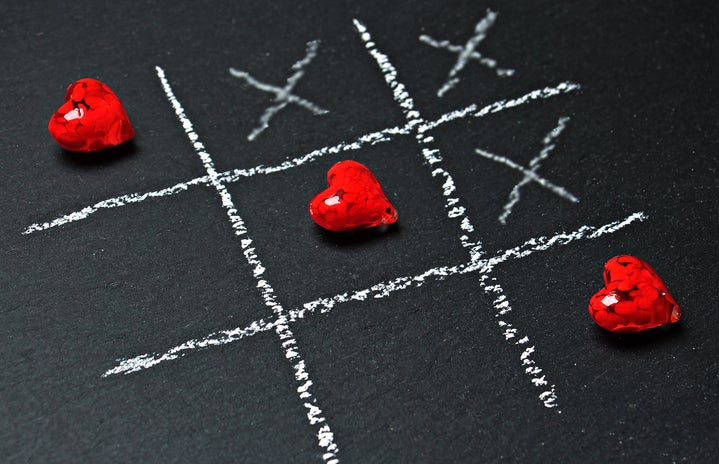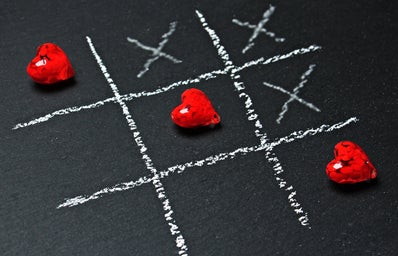When I think of blondes, I think of my dear friend Ashley: hair soft and yellow like cornsilk punctuated with strands of honey colored light, and a personality so bubbly she leaves a trail of soap suds wherever she goes. And this cornsilk and bubble combination is absolutely irresistible to men. A smile and a flip of hair from Ashley almost always results in a phone number exchange (her record for getting a number is 11 minutes), as if the blondeness cast a spell on the senses, utterly bewitching the beholder. As a lifelong brunette, I never understood how the magic worked.
I always begrudged blondes the “have more fun” personality and general fame proscribed to them. Silver screen goddesses Marilyn Monroe and Jayne Mansfield were these great bombshells and party girls, known to leave a trail of broken hearts behind them. But who were the brunette ones? In the 1920s author Anita Loos even wrote two books entitled Gentlemen Prefer Blondes and its sequel But Gentlemen Marry Brunettes. In accordance with this, then, blondes are stereotypically the party girls, the ones who know how to have a good time, and brunettes must be staid, safe, and boring. But we’re certainly not! Our fun-having capabilities are certainly equal to that of any blonde. Why was “blonde” so special, anyway? It’s just hair, right? How special could hair really be? Maybe if I could be blonde for one night I would finally get it.
A Social Experiment
In any good experiment, you need controls. Earlier in the week, I got all dolled up as a brunette, and decided to wear the same clothes, makeup, accessories, etc. when I went blonde later in the week. I also decided to go to the same bar.
The brunette results were about what I expected. A couple of long stares, a “hey, princess, come over here!”, some other catcalls, a random dude here or there coming up to try and dance with me. Nothing special, nothing out of the ordinary. I didn’t really expect much from going blonde, either.
It Started With a Wig
The color inside Ricky’s, a New York-based beauty supply store, is almost blinding. The walls are lined with any brightly colored cosmetic and/or beauty product you could ever imagine, a veritable rainbow of glammy goodness. What I needed was behind the register.
Wigs sat defiantly atop row after row of heads with thick black eyeliner and red lips, daring me to try them on. I chose three long blonde wigs and purchased my wig cap, necessary to buy before donning a wig. I opened the wig cap package and hid my brown locks away in a glorified stocking before trying on Sugar Rush (the bangs didn’t work), Touchable Tease (the middle part was awkward) and, finally, British Candy (perfect). British Candy gave me a beautiful sideswept bang that seductively hid one of my eyes. It also matched my skin tone and didn’t look too fake with my brown eyebrows. Tonight I would go out on the town as a blonde and see what would happen, if blondeness was really what gentlemen preferred.
The Transformation
My friend Erin, a curly brunette, would be my cohort for the evening. She would be responsible for pointing out any hairline issues and/or potential suitor interactions in the bar. She was also responsible for taking the transformation pictures you see here.
Once I put on the wig, I felt like I was in costume, like nobody would recognize me though the only thing that had changed was my hair. I wondered if I should even change my name, say I did something else, talk in a different voice; but Erin, a budding psychiatrist to the core, suggested I don’t. “As a blonde, you might behave differently than a brunette, and you want to make sure you’re the same person so the experiment works,” she said. She was right. A writer named Elyssa I would stay. The only thing different about me was the blonde hair. It turned out to be more than enough.
The Bar
“Hey man, do you think that’s her?”
One bouncer showed a second bouncer my three forms of ID, splayed out in his hand like a deck of cards with only my face on them. He glanced at the cards, then at my face, then back at the cards.
“Nah, man, I don’t know. It’s your call.”
I tried moving my wig a little bit as if to explain so he, but nobody else in line, would see.
“I feel like you’re tryin’ to pull a fast one over on me…But all right, go ahead.”
While this felt like a setback, it was actually a grand victory. He believed my wig was real. And if he believed it, other people would too. We were on the right track!
We went to the bar and ordered some drinks. After a while, Erin’s radar was on alert.
“That guy behind you has been looking at you for like five minutes.” But nothing happened so we made our way upstairs.
Making our way through the crowd was an experience in itself. It was almost like I was a beam of light people couldn’t look away from—people just stepped to the side and stared. Some men stared more than others. I was, after all, really, really blonde.
I became aware that I was suddenly a novelty—a rare, interesting thing (Yes, feminists, I do mean thing. Object. I was certainly being objectified not only by men but by women too). Brown hair is the second most common hair color in America, but blonde—100% pure and true, shiny champagne blonde like myself that night, is even more rare (well, maybe not in L.A., but definitely in New York). Blonde hair itself is a genetic mutation. Early cavewomen (10,000 to 11,000 years ago) developed blonde hair originally as a kind of genetic fluke, but became the ideal breeding partners after a while, perhaps simply because of the rarity of blonde hair. Now, even in my state of fake blonde-dom, I too was a curiosity. So blonde I was a strange and unfamiliar sight. But it didn’t stop one man from approaching.
Though he was interested in my friend Erin, he included both me and my hair in conversation (and would occasionally touch it), much to my later chagrin.
“Look at her face. She looks so adorable!” he said enthusiastically of Erin, in a thick New York accent.
“And you,” he said looking at me, “you look like a whore.”
Oh really, now? In my purple romper and gold flats, I was hardly oozing whore. I almost turned to walk away, but he realized that he maybe had made a mistake.
“I mean, not that you are or anything, but, you know, the hair.” Yes, the hair. But whatever my hair color was at the time did not give him license to tell me I look like a whore. People have been known to stereotype blondes not only as party girls, but idiots, people they can just push around because they’re probably so dumb they don’t know any better. In that instant, I learned that being a blonde is not as easy as it looks, that with being blonde you have to develop a thick skin, and maybe take even more care than most people to not do anything stupid for fear of being stereotyped into oblivion. Did you know that one of our previously mentioned blonde bombshells, Jayne Mansfield, had an IQ of 163? Blonde does not equal whore, blonde does not equal dumb. Blonde equals a hair color, and that’s it.
I was offended by this man’s comments not just as a blonde, but as a woman. I turned away as he kept talking to Erin, every so often referring to me as “Blondie” and “Marilyn” and still reaching out to touch my hair. He was, by all accounts, a creepshow. We left the second level of the bar and went upstairs to the rooftop.
The first man from downstairs, who was staring at me at the bar, was up there and tried to introduce himself. “I saw you downstairs,” he said.
I think this is the first time a man has said this to me. Normally, I suppose, my brown hair blends in with everyone else’s but as a blonde beam of light I am more noticeable. I am unusual, a sight. I felt myself learning a little bit more about what it is to be blonde.
Eventually Erin and I leave that bar and go to some other places. Men talk to us, some are interesting and some are not. I don’t remember their names and I don’t remember our conversations, but I have to wonder to myself—would they have given me a second glance if I wasn’t the blonde beam of light I was?
It Ended With a Wig
I thought about the night’s events a lot on the way home. I decided that I do think there is a magic that comes with blonde hair and I think with this magic comes a curse—the curse of stereotyping, the curse of being judged by your looks—that blondes, as they grow up, learn how to handle. Brunettes have their own special challenges—standing out from one another being the biggest, I think. But really, everyone has their own challenges they have to combat every day, whether they be blonde, brunette, redhead, young, old, fat, skinny, tall, short, and the list goes on.
I have to admit, I never really had to understand what it was like to be a blonde, and didn’t think it was important to know. I do think it is important to understand someone else’s experience of life, the way other people view them and how that affects them as a person. I think after this night I understand a bit better, but I also wouldn’t trade my hair for anything.
I came home and took off the wig. It had been quite a night, but now it was time to put away Miss British Candy and become myself again. I threw the wig on the chair, peeled off my wig cap and let my brown hair breathe. Even though it had only been a couple of hours, I missed it a lot.

